Best Eco-Farming Techniques to Maximize Crop Yield
This article explores innovative eco-farming techniques that enhance crop yield while promoting sustainability. Discover practical strategies that align agricultural practices with environmental stewardship for a healthier planet and prosperous farming.
Eco-farming integrates sustainable practices that enhance biodiversity, soil health, and ecosystem services. By focusing on natural processes rather than relying solely on chemical inputs, eco-farming promotes a balanced approach to agriculture. This method is not just a trend; it’s a necessary shift in modern farming that recognizes the interconnectedness of our ecosystems. With the growing concerns about climate change and environmental degradation, understanding the principles of eco-farming becomes increasingly significant. It encourages farmers to think of their land as a living system that needs nurturing, rather than merely a resource to exploit.
Healthy soil is crucial for maximizing crop yield. Techniques like cover cropping, crop rotation, and organic amendments play a vital role in improving soil structure and fertility. When we think about soil, it’s easy to overlook its complexity. Healthy soil is alive with microorganisms, nutrients, and organic matter that work together to support plant growth. Without proper management, soil can become depleted and less productive over time, leading to diminished yields. Therefore, investing in soil health is akin to investing in the future of your farm.
Cover crops prevent soil erosion, enhance nutrient cycling, and suppress weeds. By planting cover crops during the off-season, farmers can protect their soil from the elements while also enriching it. The roots of these crops help to bind the soil together, preventing erosion, while their biomass adds organic matter when tilled back into the ground. Cover cropping is not just a practice; it's a strategy that can lead to healthier soil and, consequently, better yields. Effective implementation of cover cropping requires careful planning, but the benefits are well worth the effort.
Selecting suitable cover crops based on climate and soil type is essential. For example, legumes like clover can fix nitrogen in the soil, making them an excellent choice for nutrient-poor areas. On the other hand, grasses like rye can help with erosion control. Understanding your local conditions and the specific needs of your soil will guide your selection process. Consider factors such as:
- Climate: Different crops thrive in different climates.
- Soil Type: Sandy soils may require different cover crops than clay soils.
- Pest Management: Some cover crops can deter pests, providing an added benefit.
Integrating cover crops into your crop rotation can optimize benefits. Timing is crucial; planting cover crops at the right moment can enhance their effectiveness. For instance, sowing cover crops immediately after harvesting your main crop ensures that the soil is never left bare. This practice not only improves soil health but also maximizes nutrient availability for subsequent crops. The key is to develop a rotation plan that includes cover crops as a staple, ensuring that your soil remains healthy and productive year-round.
Organic amendments like compost and manure enrich soil fertility. Incorporating these amendments into your farming system is essential for maintaining a healthy nutrient balance. Compost adds organic matter, which improves soil structure and water retention while providing a slow-release source of nutrients. Similarly, manure can be a rich source of nitrogen and other essential nutrients. However, it's important to apply these amendments correctly to avoid nutrient runoff and ensure they contribute positively to soil health.
Efficient water management is vital for sustainable farming. In a world where water scarcity is becoming a pressing issue, adopting water conservation techniques is not just beneficial; it’s necessary. Techniques such as drip irrigation and rainwater harvesting can significantly reduce water usage while ensuring that crops receive adequate moisture. These methods not only save water but also enhance crop resilience, making farms less vulnerable to drought conditions.
Drip irrigation delivers water directly to plant roots, minimizing waste. This targeted approach ensures that plants receive the right amount of water without the excess that often leads to runoff and evaporation. Implementing a drip irrigation system can seem daunting, but the long-term benefits include reduced water bills and healthier plants. It’s like giving your crops a drink when they’re thirsty, rather than flooding the entire field and hoping for the best.
Rainwater harvesting captures and stores rainwater for irrigation. This technique is not only sustainable but also cost-effective. By installing a rainwater collection system, farmers can reduce their reliance on municipal water sources and save money on water bills. Moreover, using rainwater for irrigation can improve the health of your crops, as it is often free of the chemicals found in treated water. It’s a win-win situation that promotes both sustainability and crop health.
Effective pest management is essential for maintaining crop health. Relying on chemical pesticides can lead to resistance and harm beneficial insects. Instead, eco-friendly pest control methods, such as biological pest control and companion planting, can minimize chemical use while protecting yields. These methods not only safeguard your crops but also promote a balanced ecosystem on your farm.
Utilizing natural predators and beneficial insects can control pest populations. Implementing biological pest control methods effectively involves understanding the pest dynamics in your fields. For instance, introducing ladybugs can help manage aphid populations, reducing the need for chemical interventions. This approach not only protects your crops but also enhances biodiversity, creating a healthier farm ecosystem.
Companion planting involves growing compatible plants together for mutual benefits. Certain plants can repel pests, attract beneficial insects, or enhance nutrient uptake when grown alongside others. For example, planting marigolds with vegetables can deter nematodes and other pests. This method is like creating a community in your garden, where plants support each other’s growth and health.
Diverse cropping systems enhance resilience and productivity. Crop rotation and polyculture are essential practices in eco-farming that can lead to higher yields and reduced disease risks. By rotating crops, farmers can disrupt pest cycles and improve soil health, while polyculture encourages biodiversity, making the farming system more robust against environmental stressors.
Crop rotation disrupts pest cycles and improves soil health. By alternating crops, farmers can prevent the buildup of pests and diseases that often occur when the same crop is grown repeatedly. This practice not only enhances soil fertility but also optimizes yields over time. Think of crop rotation as a way to keep your garden fresh and vibrant, ensuring that no single crop dominates the landscape.
Polyculture involves planting multiple crops together, fostering biodiversity. This method can lead to higher yields and resilience against pests. By creating a diverse planting environment, farmers can mimic natural ecosystems, which are inherently more stable and productive. Polyculture is like a symphony of plants, where each species plays its part to create a harmonious and productive ecosystem.
Technology plays a pivotal role in modern eco-farming. Innovative tools and techniques are transforming the way farmers approach sustainability. From precision agriculture to smart irrigation technologies, these advancements help farmers optimize productivity while adhering to sustainable practices. Embracing technology is not just about efficiency; it’s also about making informed decisions that benefit both the farm and the environment.
Precision agriculture utilizes data and technology to optimize farming practices. By leveraging GPS and data analytics, farmers can make informed decisions about planting, fertilizing, and irrigating their crops. This targeted approach reduces waste and maximizes yields, making farming more sustainable and profitable. It’s like having a personalized roadmap for your farm, guiding you to make the best choices for your crops.
Smart irrigation systems monitor soil moisture and weather data to optimize water usage. These technologies ensure that crops receive the right amount of water at the right time, minimizing waste and promoting healthy growth. Investing in smart irrigation is akin to having a personal assistant for your crops, ensuring they are always taken care of without unnecessary excess.
Collaboration among farmers fosters knowledge sharing and innovation. Building local farming networks enables farmers to share resources and knowledge, creating a supportive community that enhances eco-farming practices. Participating in workshops and training sessions provides valuable insights into eco-farming techniques, empowering farmers to adopt sustainable practices that benefit their land and the environment.
Creating local networks enables farmers to share resources and knowledge. By collaborating with fellow farmers, you can exchange ideas, tools, and even labor, fostering a sense of community. This support system can be invaluable, especially for those new to eco-farming. Think of it as forming a team where everyone contributes to each other’s success.
Workshops and training sessions provide valuable insights into eco-farming techniques. These educational opportunities allow farmers to learn from experts and each other, enhancing their skills and knowledge. Ongoing education is crucial for adapting to new challenges in agriculture, ensuring that farmers are well-equipped to implement innovative practices.
The future of eco-farming lies in sustainable practices that balance productivity with environmental health. As we face increasing challenges related to climate change and resource depletion, adopting eco-farming techniques becomes essential for a sustainable agricultural future. By embracing these practices, farmers can not only enhance their yields but also contribute to a healthier planet for generations to come.
- What is eco-farming? Eco-farming is an agricultural approach that integrates sustainable practices to enhance biodiversity, soil health, and ecosystem services.
- How can cover cropping benefit my farm? Cover cropping can prevent soil erosion, enhance nutrient cycling, and suppress weeds, ultimately leading to healthier soil and better yields.
- What are the advantages of drip irrigation? Drip irrigation delivers water directly to plant roots, minimizing waste and ensuring efficient water usage.
- Why is crop rotation important? Crop rotation disrupts pest cycles and improves soil health, leading to increased productivity over time.
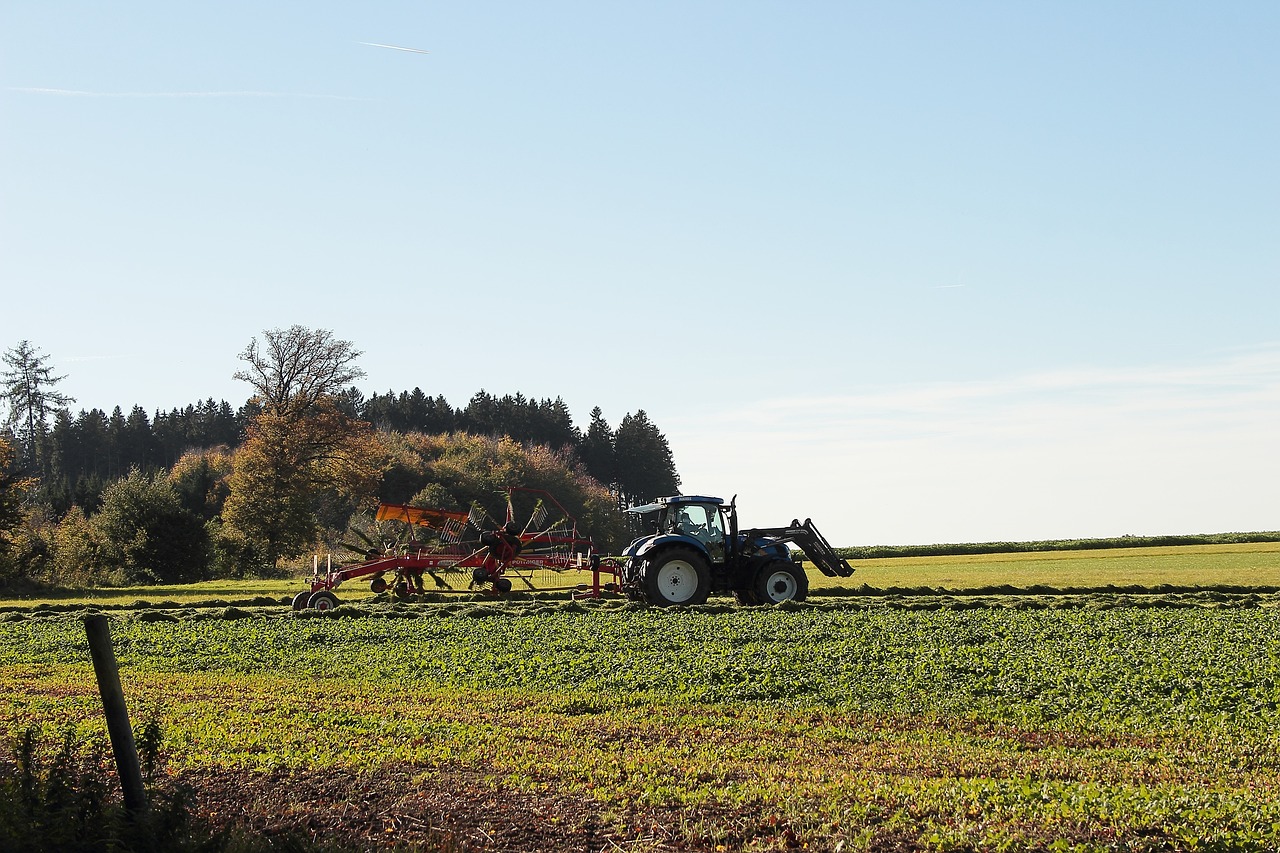
Understanding Eco-Farming
Eco-farming is a revolutionary approach that integrates sustainable agricultural practices to enhance biodiversity, improve soil health, and optimize ecosystem services. It’s not just a trend; it’s a necessity in today's world where conventional farming methods often lead to environmental degradation. By understanding the principles of eco-farming, farmers can align their practices with the natural rhythms of the environment, fostering a healthier planet while also boosting their productivity.
At its core, eco-farming emphasizes the importance of working with nature rather than against it. This means utilizing natural processes and resources to cultivate crops effectively. For example, instead of relying solely on synthetic fertilizers and pesticides, eco-farming encourages the use of organic amendments and natural pest control methods. This not only helps in maintaining the ecological balance but also results in healthier produce for consumers.
The significance of eco-farming in modern agriculture cannot be overstated. It addresses some of the most pressing challenges we face, such as climate change, soil erosion, and water scarcity. By adopting eco-farming techniques, farmers can:
- Enhance Soil Fertility: Using organic methods improves the nutrient content of the soil.
- Conserve Water: Implementing efficient irrigation techniques helps in preserving this precious resource.
- Reduce Chemical Dependency: Minimizing the use of synthetic inputs leads to healthier ecosystems.
- Increase Biodiversity: Promoting a variety of crops and natural habitats supports a rich ecosystem.
Furthermore, eco-farming can lead to improved resilience against pests and diseases. By fostering a diverse agricultural landscape, farmers can create natural barriers that deter pests, reducing the need for chemical interventions. This holistic approach not only benefits the environment but also enhances the economic viability of farming operations.
In summary, understanding eco-farming is about recognizing the interconnectedness of agricultural practices and the environment. It's a shift toward a more sustainable future where farming can thrive alongside nature, ensuring that we meet the needs of today without compromising the ability of future generations to meet theirs. As we delve deeper into the various techniques and strategies that eco-farming encompasses, you'll discover how simple changes can lead to significant impacts.

Soil Health Management
When it comes to maximizing crop yield, healthy soil is the unsung hero of agriculture. Just like a solid foundation supports a sturdy building, nutrient-rich and well-structured soil is essential for robust plant growth. So, what exactly does soil health management entail? It involves a series of practices aimed at improving the physical, chemical, and biological properties of the soil. By focusing on these aspects, farmers can enhance soil fertility, boost crop productivity, and promote a sustainable farming ecosystem.
One of the most effective techniques in soil health management is cover cropping. This practice not only prevents soil erosion but also enhances nutrient cycling and suppresses weeds. Imagine planting a crop specifically to protect and enrich the soil rather than for harvest. Cover crops, such as clover or rye, can be grown during the off-season and tilled back into the soil, adding organic matter and nutrients. The benefits are manifold:
- Improved Soil Structure: Cover crops help to create channels in the soil, allowing air and water to penetrate more easily.
- Nutrient Cycling: They capture nutrients that would otherwise leach away, making them available for the next crop.
- Weed Suppression: A thick cover crop can outcompete weeds for resources, reducing the need for herbicides.
Another cornerstone of soil health management is crop rotation. By alternating different types of crops, farmers can disrupt pest cycles and enhance soil fertility. For example, rotating legumes with cereals can naturally replenish nitrogen levels in the soil, reducing the need for synthetic fertilizers. It's like giving the soil a much-needed break, allowing it to recover and prepare for the next planting season.
In addition to cover cropping and crop rotation, the use of organic amendments is vital for enriching soil fertility. Whether it’s compost, manure, or green manure, these organic materials not only add nutrients but also improve soil structure and water retention. Think of organic amendments as a nutrient-rich smoothie for your soil—packed with everything it needs to thrive. Incorporating these amendments can lead to:
- Enhanced Microbial Activity: Beneficial microbes flourish in organic-rich soils, aiding in nutrient breakdown and availability.
- Improved Water Retention: Organic matter increases the soil's ability to hold moisture, reducing irrigation needs.
- Increased Biodiversity: A healthy soil ecosystem supports a variety of organisms, contributing to overall soil health.
To sum it up, effective soil health management is an ongoing process that requires attention, care, and a bit of creativity. By implementing practices like cover cropping, crop rotation, and the use of organic amendments, farmers can create a thriving soil environment that not only maximizes crop yield but also promotes long-term sustainability. As we move towards a future focused on eco-farming, prioritizing soil health is not just an option; it’s a necessity for a prosperous agricultural landscape.
Q1: How often should I incorporate cover crops into my farming system?
A1: It’s best to incorporate cover crops every off-season to maintain soil health and fertility.
Q2: Can I use organic amendments if I’m already using synthetic fertilizers?
A2: Yes, organic amendments can complement synthetic fertilizers by improving soil structure and microbial activity.
Q3: What types of crops are best for rotation?
A3: It’s beneficial to rotate legumes with cereals or root crops with leafy greens to maximize nutrient use and disrupt pest cycles.

Cover Cropping Benefits
Cover cropping is more than just a farming technique; it’s a game changer for sustainable agriculture. Imagine a lush green blanket of plants growing between your main crops, working tirelessly to improve your soil and protect your land. Cover crops are typically planted during off-seasons when fields would otherwise be bare, and they offer a plethora of benefits that go beyond mere aesthetics.
One of the most significant advantages of cover cropping is its ability to prevent soil erosion. Without plants to anchor the soil, heavy rains can wash away valuable topsoil, leading to decreased fertility and productivity. Cover crops, with their extensive root systems, hold the soil in place, reducing erosion and ensuring that nutrients remain where they belong.
Moreover, these crops enhance nutrient cycling. As cover crops grow, they absorb nutrients from the soil, which can then be returned to the soil when they decompose. This natural process enriches the soil, making it more fertile for subsequent crops. For instance, legumes, such as clover and vetch, fix nitrogen from the atmosphere, enriching the soil with this essential nutrient.
Another remarkable benefit is the suppression of weeds. Cover crops compete with unwanted plants for sunlight, water, and nutrients, effectively choking them out. This can significantly reduce the need for chemical herbicides, which is a win-win for both the environment and your wallet!
Here’s a quick overview of the key benefits of cover cropping:
- Soil Erosion Prevention: Protects the soil structure and maintains topsoil.
- Nutrient Cycling: Enhances soil fertility through natural processes.
- Weed Suppression: Reduces competition from unwanted plants.
- Moisture Retention: Helps retain soil moisture, benefiting main crops.
- Biodiversity Enhancement: Supports a wider range of species in the ecosystem.
Implementing cover cropping in your farming system not only boosts productivity but also promotes a healthier ecosystem. By fostering biodiversity, you create a more resilient agricultural environment capable of withstanding pests and diseases. So, if you’re looking to elevate your farming game, consider integrating cover crops into your rotation. Your soil—and your crops—will thank you!
Q1: What types of cover crops should I use?
A1: The best cover crops depend on your specific climate and soil type. Common options include legumes like clover and vetch, as well as grasses like rye and oats. Research your local conditions to choose the most suitable crops.
Q2: When is the best time to plant cover crops?
A2: Typically, cover crops are planted after the main harvest in the fall and terminated before planting the next main crop in the spring. This timing helps maximize their benefits.
Q3: Can cover crops be used in organic farming?
A3: Absolutely! Cover cropping is a widely accepted practice in organic farming, contributing to soil health and pest management without synthetic inputs.
Q4: How do cover crops affect the main crop yields?
A4: When implemented correctly, cover crops can significantly enhance main crop yields by improving soil health, fertility, and moisture retention, leading to better overall growth conditions.

Choosing the Right Cover Crops
When it comes to eco-farming, selecting the right cover crops is paramount. It's not just about throwing seeds into the ground; it's about understanding the unique needs of your soil and the specific climate conditions of your region. Think of cover crops as the unsung heroes of your farm—they work tirelessly behind the scenes to improve soil health, suppress weeds, and promote biodiversity. So, how do you choose the best cover crops for your specific conditions?
The first step is to assess your soil type and climate. Different cover crops thrive in different environments, and knowing your soil's texture, drainage capacity, and nutrient levels can guide your selection. For instance, if you have sandy soil, you might want to consider clover or vetch, which can help improve nitrogen levels and moisture retention. On the other hand, heavier clay soils may benefit from rye or buckwheat, which can enhance soil structure and prevent compaction.
Another crucial factor is the growth cycle of your cover crops. Are you looking for a quick-growing option that can be planted between cash crops, or do you need a longer-term solution? For short-term use, mustard or radish can be excellent choices, as they germinate quickly and can be tilled back into the soil before planting your main crops. For longer-term benefits, consider options like hairy vetch or field peas, which can fix nitrogen and improve soil health over an extended period.
Additionally, think about the beneficial relationships that cover crops can create within your farming ecosystem. Some plants can attract beneficial insects, while others can deter pests. For example, planting legumes not only enriches the soil with nitrogen but also attracts pollinators, which are vital for many crops. When selecting cover crops, consider how they will interact with your main crops and the overall biodiversity of your farm.
To help simplify your decision-making process, here's a quick overview of some popular cover crops and their benefits:
| Cover Crop | Benefits | Best Conditions |
|---|---|---|
| Hairy Vetch | Nitrogen fixation, weed suppression | Cool, moist climates |
| Rye | Soil erosion control, organic matter addition | Various soil types |
| Crimson Clover | Nitrogen fixation, attracts pollinators | Moderate climates |
| Buckwheat | Fast growth, weed suppression, attracts beneficial insects | Warm, well-drained soils |
In conclusion, choosing the right cover crops is a blend of science and art. It requires a keen understanding of your land, climate, and the goals you wish to achieve. By investing time in selecting the right cover crops, you're not just enhancing your soil health—you're paving the way for a more sustainable and productive farming future.
- What are cover crops? Cover crops are plants grown primarily to improve soil health, manage weeds, and enhance biodiversity.
- How do I know which cover crops are right for my farm? Assess your soil type, climate, and the specific benefits you want from cover crops to make an informed choice.
- Can cover crops improve my main crop yields? Yes, healthy cover crops can enhance soil fertility and structure, leading to improved yields in your main crops.
- How long should I grow cover crops? This depends on your farming system; some crops can be grown for a full season, while others may only need a few weeks.
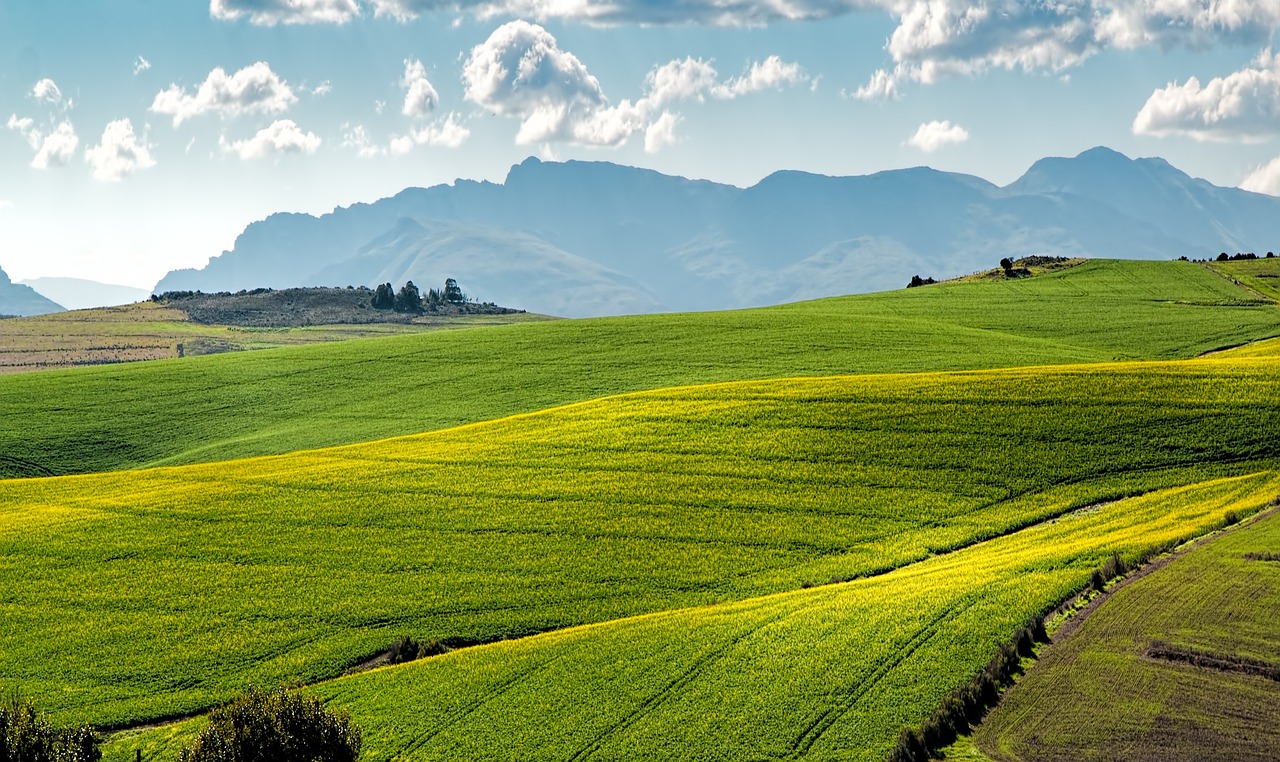
Integrating Cover Crops into Rotation
Integrating cover crops into your crop rotation is like adding a secret ingredient to your favorite recipe; it enhances the overall flavor and health of your farming system. By strategically incorporating cover crops, you can optimize the benefits they offer while maintaining a productive and sustainable farming environment. This practice not only boosts soil health but also improves crop yields, making it a win-win for farmers and the ecosystem alike.
When planning your crop rotation, consider the timing and type of cover crops that will best complement your main crops. For instance, planting a cover crop like clover during the off-season can fix nitrogen in the soil, which is essential for the growth of your subsequent cash crops. Additionally, integrating cover crops can help to:
- Reduce Soil Erosion: Cover crops protect the soil from wind and water erosion, preserving its structure and fertility.
- Enhance Nutrient Cycling: They improve the availability of nutrients in the soil, allowing your main crops to thrive.
- Suppress Weeds: A well-chosen cover crop can outcompete weeds, reducing the need for herbicides.
To effectively integrate cover crops into your rotation, start by assessing your specific soil conditions and climate. Different cover crops thrive under varying circumstances, so it's crucial to select those that will flourish in your environment. For example, if you live in a region with a cooler climate, you might opt for winter rye, which can provide excellent ground cover during the colder months.
Moreover, timing is key when introducing cover crops into your rotation. Planting them immediately after harvesting your main crop allows them to establish roots before winter sets in. As spring approaches, you can then terminate the cover crop at the right time to prepare the soil for your next planting. This cycle not only enriches the soil but also ensures that your main crops are set up for success from the get-go.
In conclusion, integrating cover crops into your rotation is a powerful technique that can significantly enhance the resilience and productivity of your farming system. By carefully selecting the right cover crops and timing their incorporation, you can create a sustainable agricultural practice that benefits both your crops and the environment.
1. What are cover crops?
Cover crops are plants that are grown primarily to improve soil health, prevent erosion, and enhance nutrient cycling, rather than for harvest.
2. How do cover crops benefit soil health?
Cover crops contribute to soil health by adding organic matter, improving soil structure, and increasing microbial activity, which leads to better nutrient availability.
3. Can I use cover crops in a small garden?
Absolutely! Cover crops can be beneficial in small gardens as well, helping to enrich the soil and suppress weeds.
4. When should I plant cover crops?
The timing depends on your main crops, but generally, cover crops are planted after the main harvest and before the next planting season.
5. What types of cover crops should I choose?
The choice of cover crops depends on your local climate, soil type, and the specific benefits you want to achieve. Common options include clover, rye, and vetch.

Organic Amendments for Soil Fertility
When it comes to boosting soil fertility, organic amendments are like a magic potion for your crops. They enrich the soil, improve its structure, and create a thriving ecosystem beneath the surface. Think of organic amendments as the nutrients your soil craves, much like how we need a balanced diet to stay healthy. By incorporating these amendments, farmers can not only enhance crop performance but also promote a sustainable approach to agriculture.
Organic amendments come in various forms, each with unique benefits. For instance, compost is a fantastic option that recycles organic waste into a nutrient-rich product. It enhances microbial activity, which is essential for breaking down nutrients in the soil. Similarly, manure from livestock is another powerful amendment, packed with essential nutrients like nitrogen, phosphorus, and potassium. When applied correctly, these amendments can significantly improve soil fertility and structure.
One of the key advantages of using organic amendments is their ability to enhance soil structure. By improving the soil's physical properties, such as aeration and water retention, crops can access the nutrients they need more efficiently. This is particularly important in regions prone to drought or heavy rainfall, where soil erosion can be a significant issue. Organic amendments help to create a more resilient soil that can withstand these environmental challenges.
Moreover, organic amendments contribute to biodiversity in the soil. When you add compost or manure, you’re not just feeding your plants; you’re also feeding a whole community of microorganisms. This biodiversity is crucial for maintaining a healthy soil ecosystem, which in turn supports plant health. Healthy soil leads to robust crops that are better equipped to fend off pests and diseases.
To effectively incorporate organic amendments into your farming practices, consider the following tips:
- Test your soil to determine its nutrient needs before applying amendments.
- Choose the right type of organic amendment based on your specific crop requirements and local conditions.
- Apply amendments at the right time, ideally before planting, to give the soil time to absorb the nutrients.
- Consider using a combination of amendments for a balanced approach.
In conclusion, the use of organic amendments is a cornerstone of sustainable farming practices. By enhancing soil fertility, improving structure, and fostering biodiversity, these amendments not only benefit crop yields but also promote a healthier environment. As farmers embrace these practices, they contribute to a more sustainable agricultural future, ensuring that our planet can continue to provide for generations to come.
Q: What are organic amendments?
A: Organic amendments are natural materials, such as compost and manure, added to soil to improve its fertility and structure.
Q: How do organic amendments improve soil health?
A: They enhance nutrient availability, improve soil structure, and promote microbial activity, leading to healthier crops.
Q: Can I use any type of organic material as an amendment?
A: Not all organic materials are suitable. It's essential to choose amendments that are rich in nutrients and suitable for your specific soil and crops.
Q: How often should I apply organic amendments?
A: The frequency of application depends on soil tests and crop needs. Generally, applying them annually or biannually is beneficial.
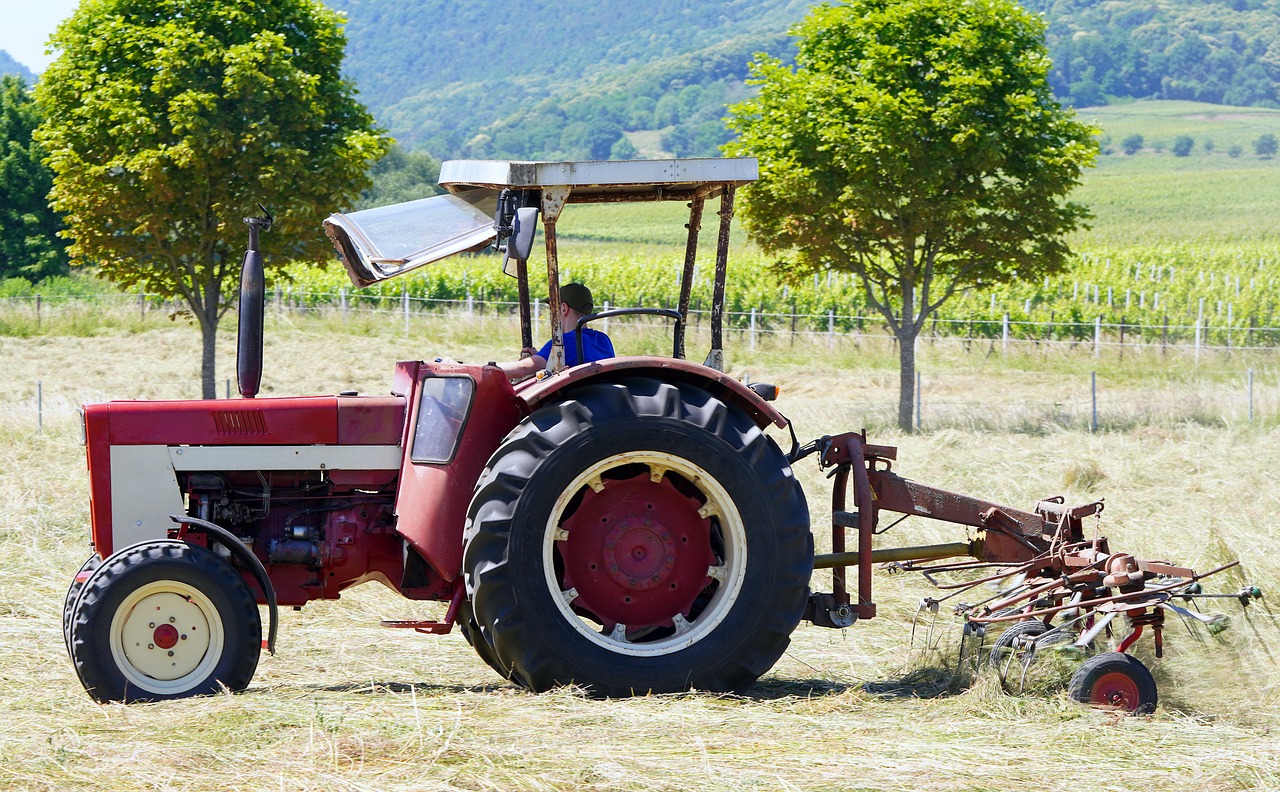
Water Conservation Techniques
Water is one of the most precious resources in farming, and its conservation is not just a trend—it's a necessity. With climate change affecting rainfall patterns and water availability, efficient water management has become crucial for sustainable agriculture. Implementing effective water conservation techniques can help farmers maintain crop health while minimizing waste. In this section, we will explore several innovative methods that can help you conserve water without compromising on yield.
One of the most effective techniques for conserving water in farming is the use of drip irrigation systems. Unlike traditional irrigation methods that flood fields, drip irrigation delivers water directly to the roots of plants through a network of tubing and emitters. This targeted approach not only reduces water waste but also promotes healthier plants by minimizing the risk of fungal diseases that thrive in overly moist conditions. Farmers can see significant reductions in water usage—often up to 50%—while still providing their crops with the moisture they need to thrive.
Another innovative approach is rainwater harvesting, which involves capturing and storing rainwater for irrigation purposes. This method can be particularly beneficial in regions with seasonal rainfall. By installing rainwater collection systems such as barrels or cisterns, farmers can collect water during rainy periods and use it during drier times. This not only helps in reducing reliance on groundwater but also improves the sustainability of farming practices. The table below highlights the key benefits of rainwater harvesting:
| Benefit | Description |
|---|---|
| Cost-Effective | Reduces water bills by utilizing free rainwater. |
| Environmental Impact | Decreases runoff and erosion, promoting soil health. |
| Water Quality | Rainwater is often cleaner than groundwater, reducing contamination risks. |
In addition to these techniques, farmers can also implement soil moisture monitoring systems to ensure that crops receive the right amount of water at the right time. By utilizing sensors that measure soil moisture levels, farmers can make informed decisions about irrigation schedules. This technology not only conserves water but also enhances crop productivity by preventing overwatering or underwatering.
Moreover, adopting mulching practices can significantly aid in water conservation. By covering the soil with organic materials like straw, wood chips, or grass clippings, farmers can reduce evaporation rates and maintain soil moisture levels. Mulching also helps suppress weeds, which compete for water and nutrients, creating a win-win situation for farmers.
Ultimately, the key to successful water conservation in farming lies in a combination of these techniques tailored to specific farm conditions. By embracing innovative practices and utilizing technology, farmers can not only ensure the sustainability of their operations but also contribute to the broader goal of environmental stewardship. As we move forward, it is essential to continue exploring and sharing these techniques within the farming community.
- What is the most effective water conservation technique for small farms?
Drip irrigation is often considered the most effective method for small farms due to its efficiency and ability to target water directly to the plant roots. - How can I implement rainwater harvesting on my farm?
Start by installing gutters and downspouts to direct rainwater into storage barrels or cisterns. Ensure that your collection system is properly maintained to maximize efficiency. - Are soil moisture sensors worth the investment?
Yes, soil moisture sensors can save water and improve crop yields by providing real-time data that helps you make informed irrigation decisions.
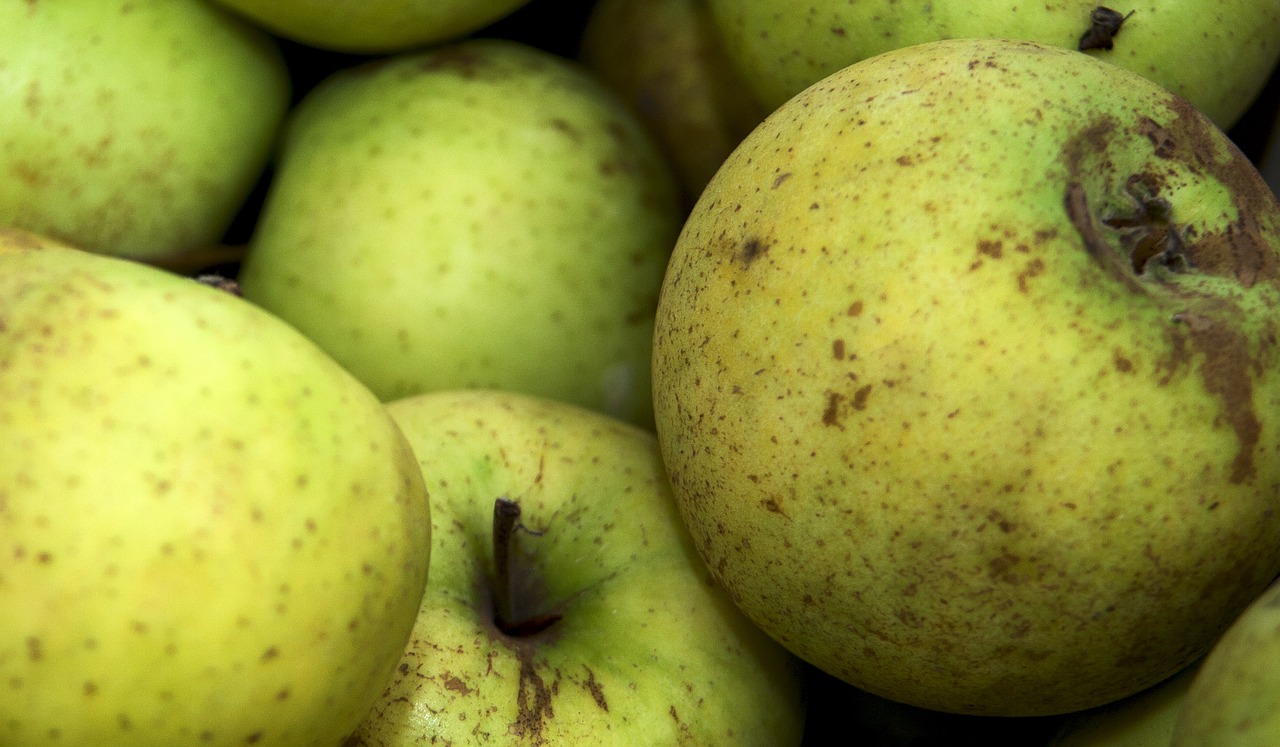
Drip Irrigation Systems
Drip irrigation systems are revolutionizing the way we approach water management in agriculture. Imagine a method that delivers water directly to the roots of your plants, minimizing waste and maximizing efficiency. This innovative technique not only conserves water but also ensures that crops receive the precise amount of moisture they need to thrive. By utilizing a network of tubing and emitters, drip irrigation allows for targeted watering that can significantly enhance crop yield while promoting sustainability.
One of the most compelling advantages of drip irrigation is its ability to reduce water usage by up to 50% compared to traditional irrigation methods. This is particularly crucial in regions facing water scarcity. Moreover, drip irrigation minimizes soil erosion and runoff, which are common issues with surface irrigation. By keeping water at the root zone, plants can absorb it more effectively, leading to healthier growth and improved yields.
Implementing a drip irrigation system may seem daunting at first, but it can be broken down into manageable steps. First, you'll need to assess your farm's layout and the specific water needs of your crops. Consider factors such as soil type, climate, and crop variety. Once you have this information, you can design a system that caters to your unique requirements. The components of a typical drip irrigation system include:
- Water Source: This could be a well, pond, or municipal supply.
- Filtration System: Essential for preventing clogging of emitters.
- Pipes and Tubing: These deliver water from the source to the plants.
- Emitters: Devices that release water directly to the soil at a controlled rate.
- Pressure Regulators: These ensure consistent water pressure throughout the system.
After installation, regular maintenance is crucial to keep the system running smoothly. This includes checking for leaks, cleaning filters, and ensuring that emitters are functioning properly. By adopting a proactive maintenance schedule, farmers can avoid costly repairs and ensure that their crops receive optimal hydration.
In summary, drip irrigation systems are a game-changer for eco-farming. They not only conserve water but also promote healthier plants and increased crop yields. As farmers continue to face challenges related to climate change and water scarcity, embracing such sustainable practices will be vital for the future of agriculture. By investing in drip irrigation, you’re not just enhancing your crop production; you’re also contributing to a more sustainable and resilient agricultural system.
Q1: How much water can I save by using drip irrigation?
A1: Drip irrigation can save up to 50% more water compared to traditional irrigation methods, making it an efficient choice for water conservation.
Q2: Is drip irrigation suitable for all types of crops?
A2: Yes, drip irrigation is versatile and can be used for a wide range of crops, including vegetables, fruits, and ornamental plants. However, it's essential to tailor the system to the specific needs of each crop.
Q3: What are the initial costs of installing a drip irrigation system?
A3: The initial investment can vary based on the size of your farm and the complexity of the system. However, many farmers find that the long-term savings on water and increased yields offset the initial costs.
Q4: How often should I run my drip irrigation system?
A4: The frequency of watering depends on several factors, including crop type, soil moisture levels, and weather conditions. It's best to monitor your plants and soil to determine the optimal schedule.

Rainwater Harvesting
Rainwater harvesting is an innovative technique that allows farmers to capture and store rainwater for irrigation purposes. This method not only conserves water but also reduces dependency on traditional water sources, making it a sustainable choice for eco-farming. Imagine being able to collect every drop of rain that falls on your land and using it to nourish your crops! It’s like having a natural reservoir right at your fingertips.
Implementing a rainwater harvesting system can be straightforward and cost-effective. The process typically involves the collection of rainwater from rooftops or other surfaces, directing it into storage tanks or cisterns. These systems can vary in complexity from simple barrels to large underground tanks, depending on the scale of your farming operation. The beauty of this method is its adaptability; you can customize it to fit your specific needs and landscape.
Here are some key benefits of rainwater harvesting:
- Water Conservation: By utilizing rainwater, farmers can significantly reduce their reliance on groundwater or municipal water supplies, which is crucial in areas facing water scarcity.
- Cost Savings: Harvesting rainwater can lower water bills and reduce expenses associated with irrigation.
- Improved Crop Health: Rainwater is typically free from chemicals and pollutants found in treated water, leading to healthier soil and crops.
- Flood Mitigation: Capturing rainwater can help reduce runoff and flooding, protecting both your land and the surrounding environment.
To get started with rainwater harvesting, consider the following steps:
- Assess Your Needs: Determine how much water you typically use for irrigation and the size of your storage system.
- Select a Collection Method: Choose between roof catchment systems or surface runoff collection based on your property layout.
- Install a Filtration System: Ensure that the collected water is clean by installing filters to remove debris and contaminants.
- Set Up a Distribution System: Use pumps or gravity-fed systems to direct harvested rainwater to your fields.
In conclusion, rainwater harvesting is not just a practical solution; it's a vital step towards sustainable farming. By harnessing the power of nature, farmers can ensure a steady supply of water for their crops while promoting environmental conservation. So, why not take advantage of this natural resource? Start planning your rainwater harvesting system today and watch your crops thrive!
Q1: What types of systems can I use for rainwater harvesting?
A1: You can use various systems, including rain barrels, cisterns, and underground tanks. The choice depends on your space and water needs.
Q2: Is rainwater safe for irrigation?
A2: Yes, rainwater is generally safe for irrigation as it is naturally soft and free from chemicals found in treated water. However, it’s advisable to filter it before use.
Q3: How much rainwater can I realistically collect?
A3: The amount of rainwater you can collect depends on your roof size and the average rainfall in your area. A simple calculation can help estimate potential collection.
Q4: Can rainwater harvesting help during dry seasons?
A4: Absolutely! By storing rainwater during wet seasons, you can provide your crops with water during drier periods, ensuring a consistent supply.
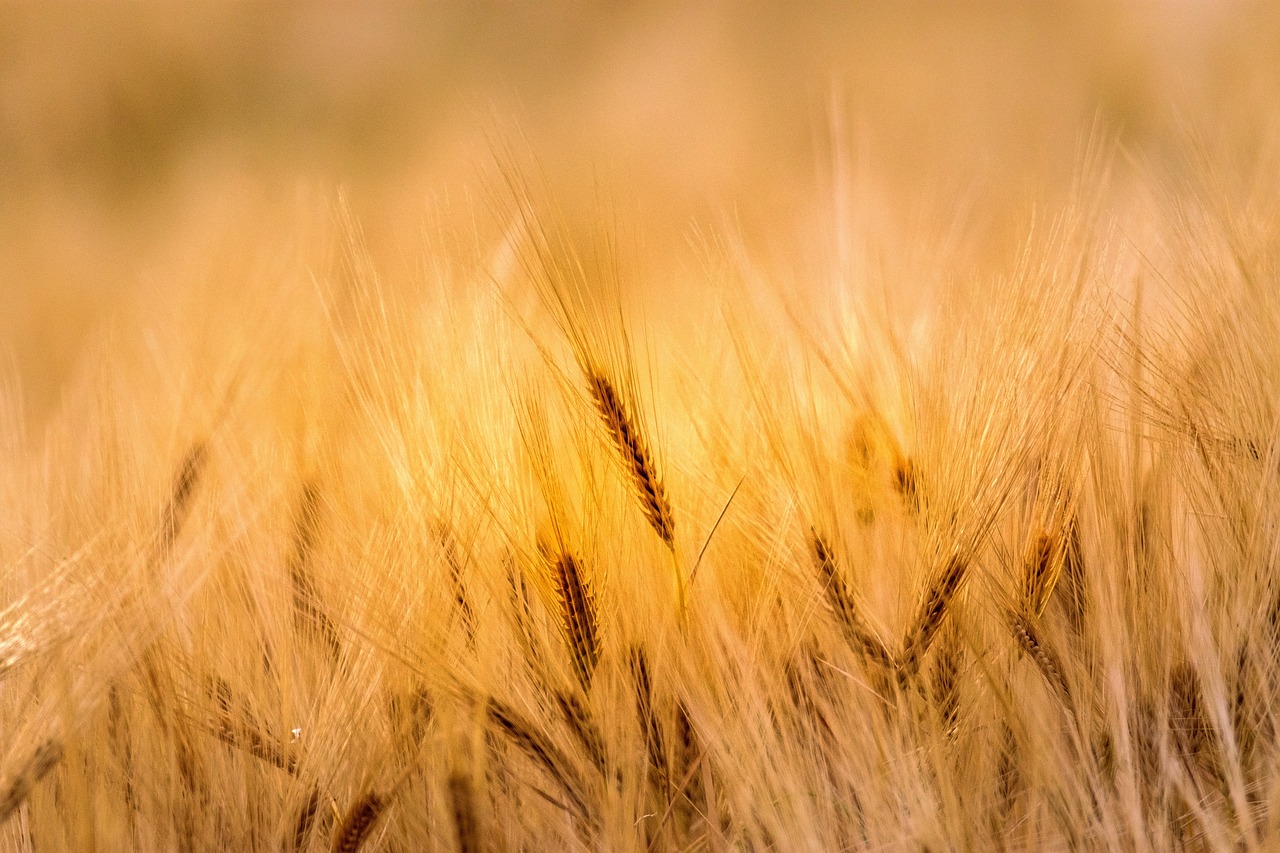
Pest Management Strategies
Effective pest management is essential for maintaining crop health and ensuring a bountiful harvest. In today's eco-farming landscape, the emphasis is on utilizing methods that are not only effective but also environmentally friendly. This means moving away from harmful chemicals and embracing natural solutions that work in harmony with the ecosystem. By integrating various pest management strategies, farmers can protect their crops while promoting biodiversity and sustainability.
One of the most promising approaches to pest management is biological pest control. This method involves leveraging natural predators and beneficial insects to keep pest populations in check. For instance, ladybugs are well-known for their appetite for aphids, while parasitic wasps can target caterpillars and other pests. Implementing biological pest control can significantly reduce the need for chemical pesticides, leading to healthier crops and a safer environment. Farmers can attract these beneficial insects by planting diverse flowering plants that provide nectar and habitat, effectively turning their fields into natural pest control systems.
Another innovative technique is companion planting, which involves growing compatible plants together to enhance growth and deter pests. This method can be likened to having a buddy system in the garden—certain plants can protect others from pests or provide necessary nutrients. For example, planting marigolds alongside vegetables can repel nematodes and other harmful insects, while legumes can enrich the soil with nitrogen, benefiting neighboring plants. By understanding the relationships between different species, farmers can create a thriving ecosystem that supports crop health.
To further enhance pest management efforts, it’s crucial to monitor pest populations and their natural enemies. This can be done through regular field scouting and the use of technology, such as pest monitoring traps or mobile apps that track pest activity. By keeping a close eye on pest dynamics, farmers can make informed decisions about when to intervene and which methods to employ, ensuring that they only take action when necessary.
In addition to these strategies, it’s vital to educate farmers about the importance of maintaining a healthy ecosystem. This includes practices such as maintaining soil health, which supports strong plant growth and resilience against pests. A well-balanced ecosystem can naturally regulate pest populations, reducing the need for intervention. Farmers can also benefit from participating in community workshops and training sessions, where they can learn from experts and share experiences with fellow farmers.
In summary, integrating biological pest control, companion planting, and effective monitoring can create a robust pest management strategy that aligns with eco-farming principles. By utilizing these methods, farmers can protect their crops while contributing to a healthier environment. The journey towards sustainable pest management is not just about combating pests; it’s about fostering a thriving ecosystem that benefits everyone involved.
- What is biological pest control?
Biological pest control involves using natural predators or parasites to manage pest populations, reducing the need for chemical pesticides. - How does companion planting work?
Companion planting involves growing different plants together to deter pests, enhance growth, or improve soil quality. - Why is monitoring pest populations important?
Monitoring helps farmers make informed decisions about pest management, ensuring interventions are timely and effective. - Can eco-friendly pest management techniques be as effective as chemical methods?
Yes, many eco-friendly methods can be highly effective when properly implemented, often leading to healthier crops and ecosystems.

Biological Pest Control
Biological pest control is a sustainable approach that utilizes natural predators and beneficial organisms to manage pest populations effectively. Instead of relying on harmful chemicals that can damage the environment and human health, this method embraces the natural balance of ecosystems. Imagine your garden as a vibrant community where every creature plays a role, from the tiniest insect to the largest plant. By encouraging beneficial insects and microorganisms, you can create a self-regulating system that reduces the need for synthetic pesticides.
One of the most fascinating aspects of biological pest control is the diversity of methods available. For instance, ladybugs, lacewings, and parasitic wasps are just a few examples of natural predators that can help keep pest populations in check. These beneficial insects feast on aphids, caterpillars, and other common pests that threaten your crops. By introducing or conserving these allies in your farming ecosystem, you can significantly reduce pest damage while promoting biodiversity.
Implementing biological pest control can be as simple as planting flowers that attract beneficial insects or creating habitats that support their life cycles. For example, nectar-rich plants can lure in ladybugs and lacewings, while providing shelter for predatory wasps. Additionally, maintaining a healthy soil ecosystem encourages the presence of beneficial nematodes and microorganisms that can suppress soil-borne pests. Here are some key practices to consider when adopting biological pest control:
- Encourage Biodiversity: Plant a variety of crops and flowers to attract a wide range of beneficial insects.
- Provide Habitat: Create shelters like insect hotels or undisturbed areas where beneficial organisms can thrive.
- Monitor Pest Populations: Regularly check for pest activity and identify natural predators in your fields.
Moreover, biological pest control is not just about introducing beneficial insects; it also involves understanding the ecological relationships within your farm. For instance, some plants can repel pests naturally, acting as a shield for your crops. This method of pest management not only protects your plants but also enhances soil health and promotes a more balanced ecosystem.
As you embark on your journey to implement biological pest control, it’s essential to remain patient and observant. The results may not be immediate, but over time, you will notice a decline in pest populations and an increase in the health of your crops. By fostering a harmonious relationship with nature, you not only enhance your crop yield but also contribute to a more sustainable agricultural practice.
Q: What are the main benefits of biological pest control?
A: The primary benefits include reduced reliance on chemical pesticides, improved biodiversity, and enhanced ecosystem health. It promotes natural pest regulation and can lead to healthier crops.
Q: How do I attract beneficial insects to my farm?
A: You can attract beneficial insects by planting a variety of flowers, providing habitats, and maintaining a diverse cropping system. Choose plants that bloom at different times to provide a continuous food source.
Q: Is biological pest control effective for all types of pests?
A: While biological pest control is effective for many pests, it may not eliminate them entirely. It works best as part of an integrated pest management strategy that includes other control methods.
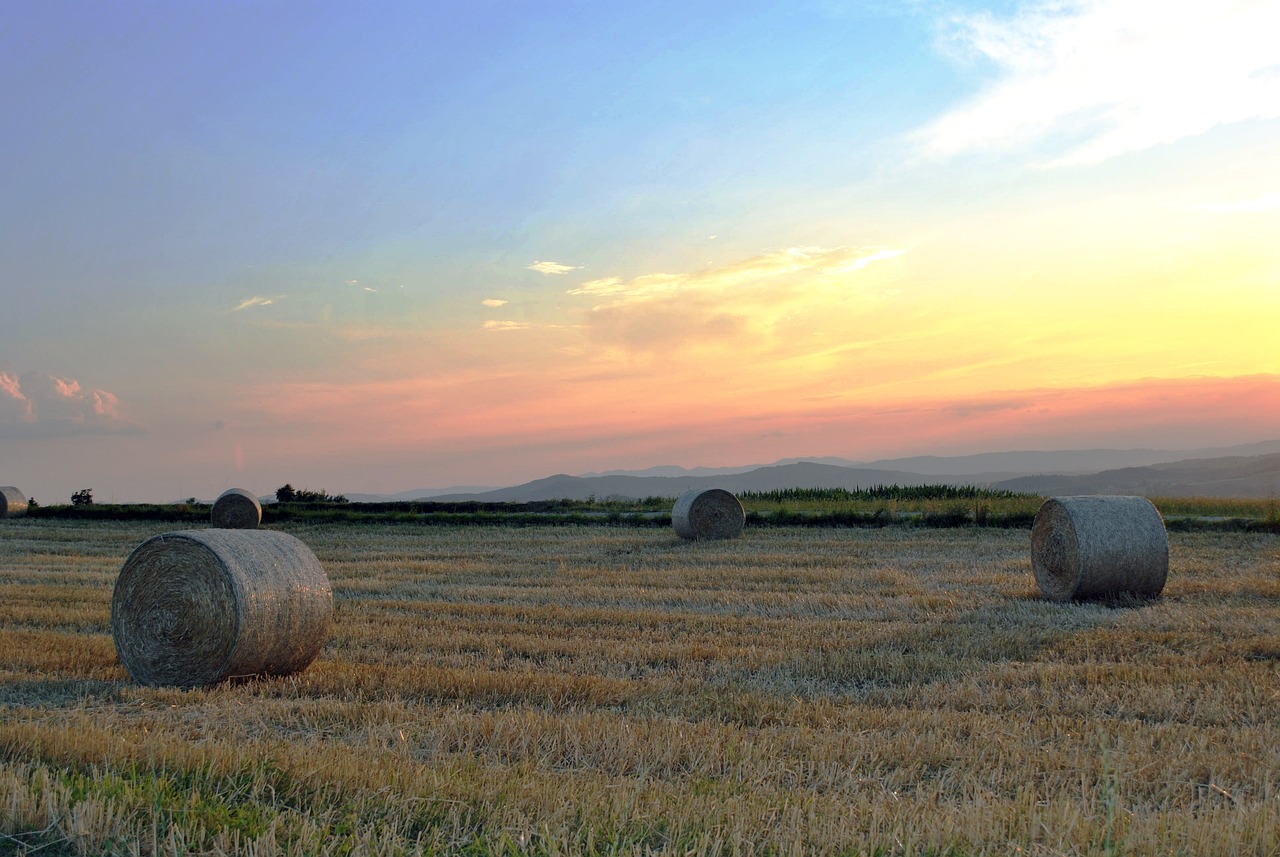
Companion Planting Techniques
Companion planting is like hosting a dinner party for your plants, where the right guests can enhance each other's growth and well-being. This technique involves strategically placing different crops near each other to promote mutual benefits, such as pest control, improved pollination, and enhanced nutrient uptake. Imagine your garden as a vibrant community where each plant plays a vital role in supporting its neighbors—this is the essence of companion planting!
One of the most significant advantages of companion planting is its ability to naturally deter pests. For instance, planting marigolds alongside vegetables can repel nematodes and other harmful insects, creating a protective barrier without the need for chemical pesticides. This not only keeps your crops healthy but also contributes to a more sustainable farming practice.
Moreover, certain plants can improve the growth of others by enhancing nutrient availability in the soil. For example, legumes like beans fix nitrogen, enriching the soil for neighboring plants that require this nutrient. This symbiotic relationship can lead to healthier, more productive crops, ultimately maximizing your yield.
Here are a few classic companion planting combinations that can work wonders in your garden:
- Tomatoes and Basil: Basil not only enhances the flavor of tomatoes but also helps repel pests like aphids and whiteflies.
- Carrots and Onions: The strong scent of onions can confuse carrot flies, reducing pest pressure on your carrots.
- Corn, Beans, and Squash (Three Sisters): This traditional Native American planting method utilizes corn for vertical growth, beans for nitrogen fixation, and squash for ground cover, creating a harmonious ecosystem.
Integrating companion planting techniques into your farming system requires careful planning and observation. Start by mapping out your garden space and considering the growth habits and needs of each plant. It's essential to monitor how these combinations perform throughout the growing season, as some plants may thrive together while others may not. Remember, gardening is a dynamic process, and what works well one year might need adjustment the next.
In conclusion, companion planting is not just a gardening trend; it's a time-tested strategy that promotes biodiversity, enhances crop resilience, and maximizes yields. By creating a diverse and supportive plant community, you can cultivate a thriving garden that benefits both the environment and your harvest.
Q: What is companion planting?
A: Companion planting is a gardening technique where different plants are grown together to enhance growth, deter pests, and improve nutrient uptake.
Q: Can I use any plants for companion planting?
A: Not all plants are compatible. It's essential to research and choose companion plants that have mutually beneficial relationships.
Q: How do I know which plants to pair together?
A: Consider factors such as growth habits, nutrient needs, and pest resistance. Many gardening resources provide lists of effective companion plants.
Q: Does companion planting really make a difference?
A: Yes! Many gardeners report improved yields, healthier plants, and reduced pest problems when implementing companion planting techniques.
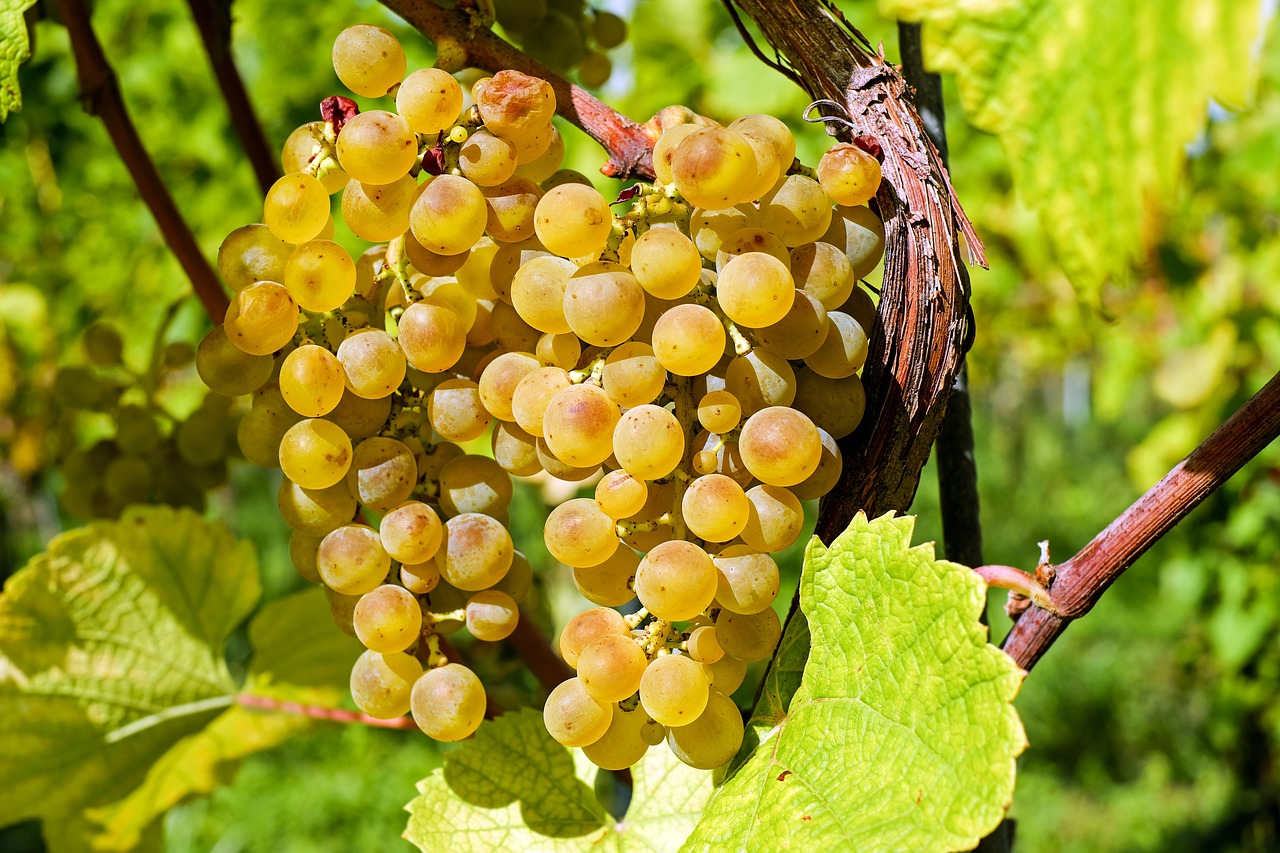
Crop Diversity and Rotation
When it comes to farming, the age-old adage "variety is the spice of life" couldn’t ring truer. Crop diversity and rotation are not just buzzwords; they are essential practices that can transform your agricultural landscape. By planting a variety of crops and rotating them regularly, farmers can significantly enhance soil health, increase yields, and reduce the likelihood of pests and diseases taking hold. Think of it as a well-balanced diet for your farm; just as we need a mix of nutrients for optimal health, crops thrive best when they’re not all competing for the same resources.
One of the most significant benefits of crop rotation is its ability to disrupt pest and disease cycles. When the same crop is grown repeatedly in the same location, pests and diseases that target that crop can build up in the soil. By rotating crops, you can effectively break these cycles, making it harder for pests to establish themselves. For example, if you plant corn one year and then switch to beans the next, the pests that thrived on corn will find themselves without a food source, leading to a natural decline in their populations.
Moreover, diverse cropping systems can improve soil structure and fertility. Different crops have varying root structures and nutrient needs, which means that they can utilize soil resources more efficiently. For instance, deep-rooted plants can access nutrients that are out of reach for shallow-rooted ones, leading to a more balanced nutrient profile in the soil. This not only supports the current crops but also lays the groundwork for future planting seasons.
Incorporating polyculture, or the practice of growing multiple crops in the same space, can further enhance these benefits. Polyculture systems mimic natural ecosystems, where various plants coexist and support each other. This can lead to improved resilience against pests and diseases, as well as better overall productivity. Imagine a small garden where tomatoes, basil, and marigolds grow together; the basil can repel certain pests that target tomatoes, while marigolds attract beneficial insects. This synergy is a powerful testament to the advantages of crop diversity.
To effectively implement crop rotation and diversity, farmers can consider the following strategies:
- Plan a rotation schedule that includes a variety of crops, such as legumes, grains, and vegetables.
- Incorporate cover crops during the off-season to improve soil health and prevent erosion.
- Monitor soil health regularly to understand nutrient levels and adjust crop choices accordingly.
In conclusion, embracing crop diversity and rotation is not just a trend; it’s a sustainable farming practice that can lead to healthier soils, reduced pest pressures, and ultimately, higher yields. As farmers, we have the power to create thriving ecosystems right in our fields. So, why not mix things up a bit? Your crops—and the planet—will thank you!
Q: What is crop rotation?
A: Crop rotation is the practice of growing different types of crops in the same area across a sequence of seasons. This helps to maintain soil health and reduce pest and disease problems.
Q: How does crop diversity benefit my farm?
A: Crop diversity enhances soil health, reduces pest and disease risks, and improves overall farm resilience. It allows for better resource utilization and can lead to increased yields.
Q: Can I practice crop rotation on a small scale?
A: Absolutely! Crop rotation can be effectively practiced in small gardens or farms. Even small changes, like alternating between different vegetables, can have significant benefits.
Q: How often should I rotate my crops?
A: It’s generally recommended to rotate crops every season or every year, depending on the type of crop and local growing conditions. Keep in mind that some crops may benefit from longer rotations.

Benefits of Crop Rotation
Crop rotation is a time-honored agricultural practice that offers a myriad of benefits for farmers looking to maximize their crop yield while maintaining soil health. By systematically changing the type of crops grown in a particular field from season to season, farmers can disrupt pest and disease cycles, improve soil fertility, and enhance overall biodiversity. This method not only leads to healthier crops but also promotes a more sustainable farming approach.
One of the most significant advantages of crop rotation is its ability to reduce pest and disease prevalence. Different crops attract different pests, and by rotating crops, you can effectively break the life cycles of pests that thrive on specific plants. For instance, if you plant corn one year and then switch to soybeans the next, the pests that target corn will have a harder time finding their preferred food source. This natural pest control reduces the need for chemical pesticides, which can be harmful to the environment.
In addition to pest management, crop rotation enhances soil fertility. Different plants have varying nutrient requirements and contributions. Leguminous crops, such as beans and peas, have the unique ability to fix nitrogen in the soil, enriching it for subsequent crops. This means that after a legume crop, the following plants will have access to more nutrients, leading to better growth and yield. The table below illustrates some common crop rotations and their benefits:
| Crop Sequence | Benefits |
|---|---|
| Corn → Soybeans | Reduces nematodes and increases soil nitrogen. |
| Wheat → Clover | Improves soil structure and adds organic matter. |
| Potatoes → Mustard | Suppresses soil-borne diseases and pests. |
Moreover, crop rotation promotes biodiversity within the farming ecosystem. By diversifying the types of crops grown, farmers can create a more resilient agricultural system that can better withstand environmental stressors, such as droughts or floods. A diverse cropping system also attracts a wider range of beneficial insects and wildlife, which can further enhance pest control and pollination.
Lastly, implementing crop rotation can lead to improved economic returns. With healthier crops and reduced reliance on chemical inputs, farmers can enjoy lower production costs and potentially higher profits. Additionally, rotating crops can allow farmers to take advantage of different market demands, ensuring they can sell their produce at favorable prices throughout the year.
In conclusion, the benefits of crop rotation extend far beyond simple yield increases. By adopting this practice, farmers can enhance soil health, manage pests sustainably, promote biodiversity, and improve their economic viability. It's a win-win for both the farmer and the environment, paving the way for a more sustainable agricultural future.
- What is crop rotation? Crop rotation is the practice of growing different types of crops in the same area across a sequence of seasons.
- How does crop rotation help with pest management? By changing the types of crops planted, it disrupts the life cycles of pests that are specific to certain plants.
- Can crop rotation improve soil health? Yes, different crops contribute various nutrients to the soil, and rotating them can enhance overall soil fertility.
- What are some examples of effective crop rotations? Common rotations include corn and soybeans, wheat and clover, or potatoes and mustard.

Implementing Polyculture Systems
Implementing polyculture systems can be a game-changer for farmers seeking to enhance both biodiversity and crop yield. Unlike traditional monoculture, where a single crop dominates the landscape, polyculture involves growing multiple crops in the same space, creating a vibrant ecosystem that benefits all plants involved. Imagine a small garden where tomatoes, basil, and peppers thrive side by side; this is the essence of polyculture. By fostering diversity, farmers can create a more resilient agricultural system that combats pests and diseases more effectively.
One of the primary advantages of polyculture is its ability to mimic natural ecosystems. In nature, plants coexist in various combinations, each contributing to the overall health of the environment. By adopting a similar approach in farming, we can achieve a balance that not only maximizes yields but also reduces the need for synthetic fertilizers and pesticides. For instance, certain plants can enhance the growth of their neighbors by improving soil nutrients or providing shade. This natural synergy leads to healthier crops and a more sustainable farming practice.
To successfully implement a polyculture system, farmers should consider the following key factors:
- Crop Compatibility: Select crops that complement each other. For example, planting legumes alongside grains can enhance soil nitrogen levels, benefiting both crops.
- Planting Density: Ensure that plants are spaced appropriately to allow for optimal growth without competing for resources.
- Seasonal Planning: Rotate crops seasonally to prevent soil depletion and encourage biodiversity.
Moreover, monitoring and adapting your polyculture system is crucial. Keep an eye on which combinations yield the best results and be prepared to make adjustments. This might mean trying out new plant varieties or altering planting times based on weather conditions. Engaging with local agricultural extension services or community farming groups can provide valuable insights and support as you navigate this new approach.
Incorporating polyculture systems not only benefits the individual farmer but also contributes positively to the environment. By promoting biodiversity, we can enhance soil health, improve water retention, and create habitats for beneficial insects and wildlife. This holistic approach to farming aligns perfectly with the principles of eco-farming, ensuring that we are not only producing food but also nurturing the planet for future generations.
Q1: What is polyculture?
A1: Polyculture is an agricultural practice that involves growing multiple crops in the same space, promoting biodiversity and ecological balance.
Q2: How does polyculture improve crop yields?
A2: By allowing different plants to coexist, polyculture can enhance nutrient cycling, reduce pest populations, and improve overall soil health, leading to higher crop yields.
Q3: Can I start polyculture in a small garden?
A3: Absolutely! Polyculture can be implemented in gardens of any size. Start by choosing compatible plants and experimenting with different combinations.
Q4: What are some examples of successful polyculture combinations?
A4: Common combinations include tomatoes with basil, corn with beans, and carrots with onions. Each pairing offers unique benefits that support growth and pest management.

Utilizing Technology in Eco-Farming
In today's rapidly evolving agricultural landscape, technology stands as a beacon of hope for farmers aiming to enhance their productivity while remaining committed to sustainability. Eco-farming, which emphasizes environmentally friendly practices, can greatly benefit from innovative technological solutions. The integration of technology not only streamlines operations but also minimizes resource waste, ensuring that farming can meet the demands of a growing population without compromising the health of our planet.
One of the most exciting advancements in this realm is precision agriculture. This approach utilizes data analytics, GPS technology, and IoT (Internet of Things) devices to provide farmers with detailed insights into their fields. By understanding soil conditions, crop health, and weather patterns, farmers can make informed decisions that lead to optimized inputs and improved yields. For example, farmers can apply fertilizers and pesticides only where needed, reducing chemical runoff and enhancing soil health.
Another game-changing technology is smart irrigation systems. These systems leverage sensors and weather data to monitor soil moisture levels in real-time. By adjusting water application based on actual needs, farmers can significantly conserve water resources, which is critical in regions facing water scarcity. Imagine a system that automatically waters your crops just when they need it, ensuring they're never over or under-watered. This not only saves water but also promotes healthier plants, leading to better yields.
Moreover, the use of drones in eco-farming is becoming increasingly popular. Drones can survey large areas of farmland quickly and efficiently, providing farmers with aerial imagery that reveals crop health, soil conditions, and pest infestations. This real-time data allows for swift action, whether it’s applying targeted treatments or adjusting management practices. The ability to monitor fields from above gives farmers a comprehensive view of their operations, enabling them to make better decisions.
As we delve deeper into the realm of technology in eco-farming, we must also consider the importance of data management systems. These systems aggregate data from various sources, such as weather forecasts, soil sensors, and crop performance metrics. By analyzing this data, farmers can identify trends and patterns that inform their farming practices. For instance, a farmer may discover that a particular crop variety thrives better under specific weather conditions, allowing for more strategic planning in future planting seasons.
To summarize, the utilization of technology in eco-farming is not merely a trend; it's a necessity for modern agriculture. By embracing tools like precision agriculture, smart irrigation, drones, and data management systems, farmers can enhance their productivity while adhering to sustainable practices. The future of farming is bright, and technology is at the forefront of this exciting evolution.
- What is precision agriculture?
Precision agriculture is a farming management concept that uses technology to monitor and manage field variability in crops, optimizing yields while minimizing waste. - How does smart irrigation work?
Smart irrigation systems use sensors to measure soil moisture and weather conditions, automatically adjusting water application to meet the specific needs of crops. - What role do drones play in eco-farming?
Drones are used for aerial surveys of farmland, providing valuable data on crop health, soil conditions, and pest management, allowing for timely interventions. - Why is data management important in farming?
Data management helps farmers analyze various data points to make informed decisions, improving efficiency and productivity while reducing environmental impact.

Precision Agriculture
represents a revolutionary approach to farming that leverages technology to enhance productivity while minimizing waste. Imagine being able to treat each section of your farm as a unique entity, tailoring your inputs—like water, fertilizers, and pesticides—to the specific needs of each crop. This is the essence of precision agriculture, where data-driven decisions lead to more efficient and sustainable farming practices.
At the heart of precision agriculture are various technologies that collect and analyze data to inform farming practices. These technologies include GPS (Global Positioning System), remote sensing, and IoT (Internet of Things) devices. By utilizing these tools, farmers can monitor crop health, soil conditions, and weather patterns in real-time. This information allows them to make informed decisions, such as when to irrigate, fertilize, or apply pest control measures.
One of the most significant advantages of precision agriculture is its ability to reduce inputs while maximizing outputs. For instance, by applying fertilizers only where they are needed, farmers can significantly cut down on costs and environmental impact. A study showed that precision agriculture can reduce fertilizer usage by up to 30%, leading to both economic savings and less runoff into nearby waterways.
Moreover, precision agriculture enhances water management. With smart irrigation technologies, farmers can monitor soil moisture levels and weather forecasts to optimize their irrigation schedules. This not only conserves water but also ensures that crops receive the right amount of moisture at the right time, promoting healthier growth.
To better illustrate the impact of precision agriculture, consider the following table that outlines the key benefits:
| Benefit | Description |
|---|---|
| Increased Yield | Targeted inputs lead to healthier crops and higher productivity. |
| Cost Savings | Reduced use of fertilizers, water, and pesticides lowers overall expenses. |
| Environmental Sustainability | Minimized chemical runoff and water usage protect ecosystems. |
| Data-Driven Decisions | Real-time data allows for timely interventions and adjustments. |
In conclusion, precision agriculture is not just about adopting new technologies; it's about reshaping the way we think about farming. By embracing this approach, farmers can enhance their productivity while also being stewards of the environment. The future of agriculture is here, and it's more precise than ever.
- What is precision agriculture? Precision agriculture is a farming management concept that uses technology to monitor and manage field variability in crops.
- How does precision agriculture benefit farmers? It allows farmers to increase yields, reduce costs, and promote environmental sustainability.
- What technologies are used in precision agriculture? Key technologies include GPS, remote sensing, and IoT devices.
- Can precision agriculture help with water conservation? Yes, it optimizes irrigation practices, leading to significant water savings.

Smart Irrigation Technologies
In the ever-evolving world of agriculture, are revolutionizing the way we manage water resources. These innovative systems are designed to optimize water usage, ensuring that crops receive the right amount of moisture without waste. Imagine a scenario where farmers can monitor soil moisture levels in real-time and adjust their irrigation schedules accordingly. This is not just a dream; it's a reality made possible by advancements in technology.
At the heart of smart irrigation lies the integration of sensors, data analytics, and automated systems. These components work together to create a responsive irrigation system that adapts to the changing needs of the crops. For instance, soil moisture sensors can be placed in the ground to measure how much water is present at various depths. This data is then analyzed to determine when and how much water should be applied, significantly reducing the risk of overwatering or underwatering.
One of the most popular smart irrigation technologies is drip irrigation. This method delivers water directly to the plant roots through a network of tubing and emitters. By minimizing evaporation and runoff, drip irrigation not only conserves water but also promotes healthier plants. Furthermore, when combined with soil moisture sensors, farmers can automate the system, allowing it to water crops only when necessary. This not only saves water but also reduces labor costs, making it a win-win situation for farmers.
Another exciting development in smart irrigation is the use of weather-based irrigation controllers. These devices utilize real-time weather data to adjust irrigation schedules based on current and forecasted conditions. For example, if rain is predicted, the system can delay watering, thus conserving precious water resources. This technology not only helps in conserving water but also enhances crop yield by ensuring that plants are watered at optimal times.
Moreover, the implementation of mobile applications has made managing irrigation systems more accessible than ever. Farmers can now monitor their fields from their smartphones, receiving alerts and updates on soil moisture levels, weather conditions, and irrigation schedules. This level of control empowers farmers to make informed decisions quickly, ensuring that their crops thrive in any climate.
To illustrate the impact of smart irrigation technologies, consider the following table that highlights the benefits:
| Smart Irrigation Technology | Benefits |
|---|---|
| Drip Irrigation | Reduces water waste, enhances plant health, lowers labor costs |
| Weather-Based Controllers | Adjusts watering schedules based on weather forecasts, conserves water |
| Soil Moisture Sensors | Provides real-time data on soil conditions, prevents overwatering |
| Mobile Applications | Enables remote monitoring and management, increases efficiency |
In conclusion, the adoption of smart irrigation technologies is not just a trend; it's a necessary evolution in farming practices. As water scarcity becomes a growing concern worldwide, these technologies offer a sustainable solution to manage one of our most vital resources. By embracing these innovations, farmers can not only maximize their crop yields but also contribute to a more sustainable future.
- What are smart irrigation technologies? Smart irrigation technologies are advanced systems that use sensors, data analytics, and automation to optimize water usage in agriculture.
- How do drip irrigation systems work? Drip irrigation systems deliver water directly to the roots of plants through a network of tubing, minimizing evaporation and runoff.
- Can smart irrigation save water? Yes, by using real-time data and automated systems, smart irrigation can significantly reduce water waste and ensure crops receive the right amount of moisture.
- Are there mobile apps for managing irrigation? Absolutely! Many mobile applications allow farmers to monitor and manage their irrigation systems remotely, providing alerts and updates on soil moisture and weather conditions.

Community and Knowledge Sharing
In the world of eco-farming, the power of cannot be overstated. Imagine a vibrant network of farmers, each bringing their unique experiences and insights to the table. This collaborative spirit not only fosters innovation but also cultivates a sense of camaraderie among those who share a common goal: to promote sustainable agricultural practices. By coming together, farmers can exchange valuable information on successful techniques, troubleshoot challenges, and celebrate their successes.
Building local farming networks is essential for creating a supportive environment. These networks can take various forms, from informal gatherings to organized cooperatives. When farmers connect, they can share resources such as tools, seeds, and even labor, which can significantly reduce costs. Moreover, they can discuss the latest advancements in eco-farming, ensuring that everyone is on the cutting edge of sustainability practices. Participating in workshops and training sessions is another effective way to enhance knowledge. These educational opportunities provide farmers with hands-on experience and expert advice, empowering them to implement new strategies on their farms.
Here are some benefits of community and knowledge sharing in eco-farming:
- Resource Optimization: Sharing tools and equipment reduces individual costs and promotes efficiency.
- Innovation: Collaboration leads to creative solutions and the adoption of the latest eco-farming techniques.
- Support System: A strong community provides emotional and practical support, helping farmers navigate challenges.
- Increased Resilience: With shared knowledge, farmers can better adapt to environmental changes and market fluctuations.
As we look towards the future, it’s clear that the path to sustainable agriculture is paved with collaboration. By fostering a culture of knowledge sharing, farmers can not only improve their own practices but also contribute to the broader movement towards eco-farming. The more we share, the more we grow—both as individuals and as a community committed to a healthier planet.
Q1: What is eco-farming?
A1: Eco-farming is an agricultural approach that integrates sustainable practices to enhance biodiversity, improve soil health, and promote ecosystem services.
Q2: How can I start building a local farming network?
A2: Begin by reaching out to neighboring farmers, attending local agricultural events, and utilizing social media platforms to connect with like-minded individuals.
Q3: What are some effective ways to share knowledge among farmers?
A3: Organizing workshops, creating online forums, and hosting farm tours are great ways to facilitate knowledge sharing.
Q4: Why is community important in eco-farming?
A4: Community support enhances resource sharing, fosters innovation, and provides a network of emotional and practical assistance for farmers.
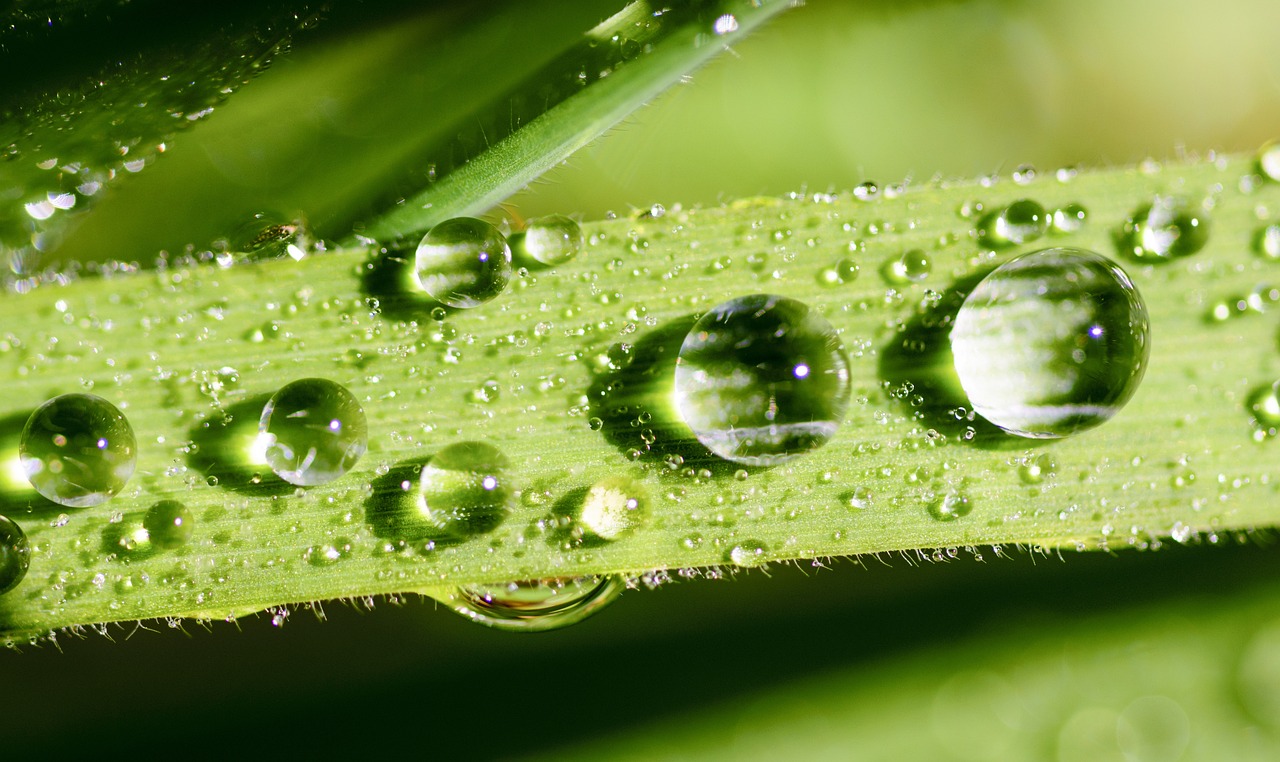
Building Local Farming Networks
In the ever-evolving landscape of agriculture, has become a crucial strategy for farmers seeking to thrive in both productivity and sustainability. Imagine a community where farmers not only share resources but also exchange knowledge, experiences, and innovative techniques. This collaborative spirit can lead to a more resilient agricultural sector, where everyone benefits from collective wisdom.
Establishing these networks can begin with simple steps. For instance, farmers can organize local meetings or informal gatherings where they can discuss challenges and successes. Such interactions foster a sense of community and promote the sharing of valuable insights. Whether it’s about pest management strategies or the latest eco-farming techniques, these conversations can spark ideas that lead to improved practices.
Moreover, local farming networks can facilitate the sharing of resources. Farmers can pool their equipment, share labor during peak seasons, or even collaborate on bulk purchases of seeds and fertilizers. This not only reduces individual costs but also enhances efficiency. Imagine a farmer who no longer has to invest in expensive machinery that they only use a few times a year; instead, they can share these resources with their neighbors, creating a win-win situation.
Additionally, participating in local agricultural fairs, workshops, and training sessions can significantly strengthen these networks. These events provide opportunities for farmers to connect with experts and learn about the latest trends in eco-farming. They can also serve as platforms for farmers to showcase their produce, share success stories, and inspire others in the community. By actively engaging in these events, farmers can build relationships that extend beyond mere acquaintance, fostering a supportive environment that encourages growth and innovation.
In summary, building local farming networks is not just about collaboration; it’s about creating a vibrant community that uplifts each member. By sharing knowledge, resources, and experiences, farmers can navigate the challenges of modern agriculture together. Ultimately, these networks can lead to sustainable practices that benefit not only the farmers but also the environment and society as a whole.
- What are the benefits of joining a local farming network? Joining a local farming network allows farmers to share resources, gain access to new information, and build a community of support.
- How can I start a local farming network? You can start by organizing informal gatherings, participating in local agricultural events, and reaching out to neighboring farmers.
- What types of resources can be shared in a farming network? Resources such as equipment, labor, seeds, and knowledge about best practices can be shared among network members.

Participating in Workshops and Training
Participating in workshops and training sessions is a game-changer for farmers looking to enhance their eco-farming practices. These educational opportunities not only equip farmers with the latest techniques and knowledge but also foster a sense of community and collaboration. Imagine stepping into a room filled with like-minded individuals, all eager to share their experiences and learn from one another. It’s like a breath of fresh air, invigorating your passion for farming while providing practical insights that can be directly applied to your land.
Workshops often cover a wide range of topics, from soil health management to innovative pest control methods. For example, a workshop on organic farming might delve into the benefits of using natural fertilizers and composting techniques, while another might focus on the integration of technology in farming practices. This diversity in topics ensures that there is something valuable for everyone, regardless of their farming experience or the scale of their operation.
Moreover, training sessions frequently feature hands-on activities, allowing participants to practice new skills in real-time. This experiential learning approach solidifies knowledge and builds confidence, making it easier to implement these practices back on the farm. For instance, you might learn how to set up a drip irrigation system during a workshop, and then return home ready to install it yourself. This not only boosts your productivity but also enhances your sustainability efforts.
Additionally, workshops and training sessions often serve as a platform for networking. Building relationships with other farmers, agricultural experts, and even suppliers can lead to invaluable collaborations. You might find a partner to share resources with or discover a new market for your produce. The connections you make in these settings can be as beneficial as the knowledge you gain.
To ensure you get the most out of these experiences, consider the following tips:
- Choose Relevant Workshops: Look for sessions that align with your specific interests and farming goals.
- Engage Actively: Don’t hesitate to ask questions and participate in discussions. Your input can spark valuable conversations.
- Follow Up: After the workshop, reach out to new contacts and continue the dialogue. This can lead to ongoing support and collaboration.
In conclusion, participating in workshops and training is not just about gaining knowledge; it’s about transforming your farming practices and connecting with a community of passionate individuals. By investing time in these educational opportunities, you’re not only enhancing your skills but also contributing to a larger movement towards sustainable agriculture.
Q: What types of workshops are available for eco-farming?
A: Workshops can cover a variety of topics, including soil health, pest management, water conservation, and the use of technology in farming. Look for local agricultural extension offices or community colleges for offerings.
Q: How do I find workshops and training sessions near me?
A: You can find workshops through agricultural extension services, local farming organizations, or online platforms that specialize in agricultural education. Social media groups dedicated to farming can also be a great resource.
Q: Are there costs associated with attending these workshops?
A: Some workshops may have a fee, while others are free or subsidized. It’s best to check with the organizing body for specific details regarding costs and registration.
Q: Can I suggest topics for future workshops?
A: Absolutely! Many organizations value feedback from participants and are open to suggestions for future topics. Don’t hesitate to share your ideas!
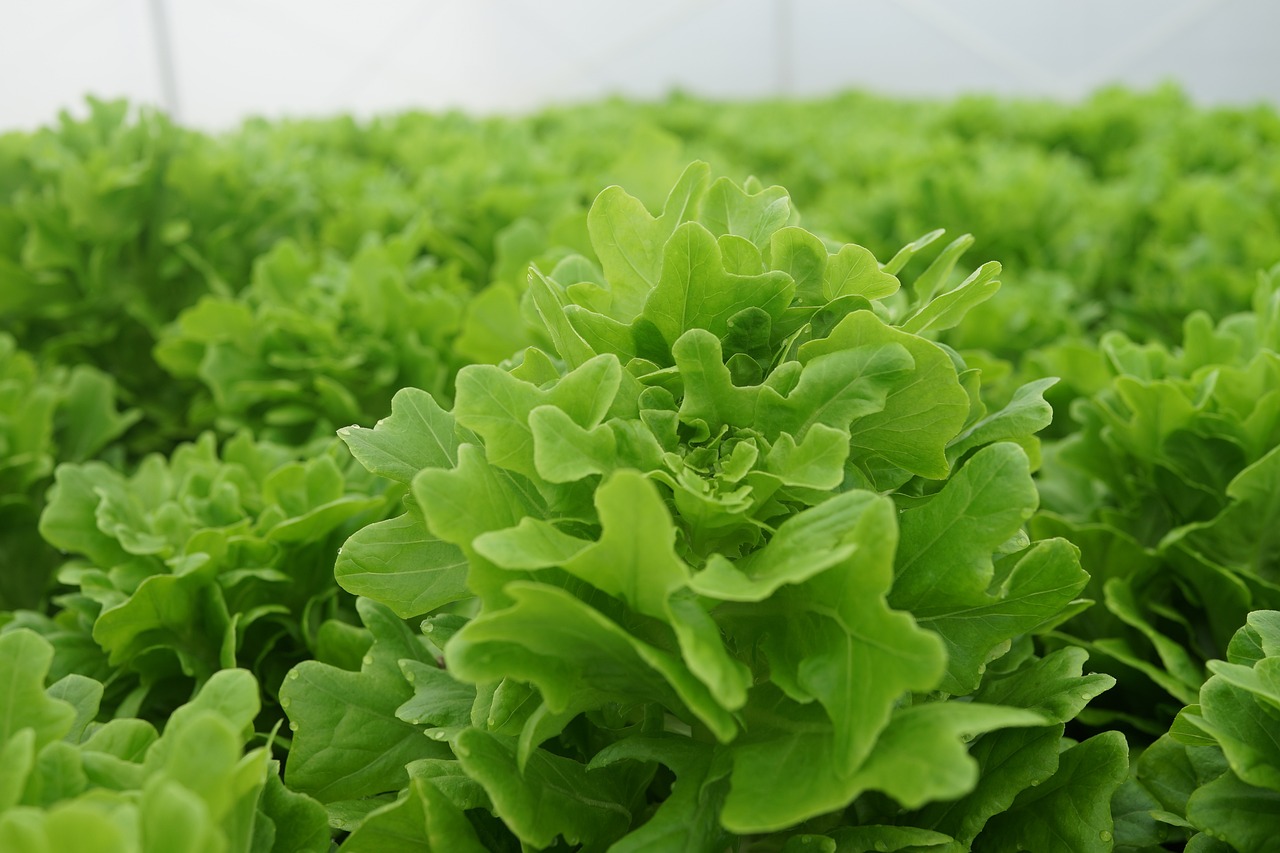
Conclusion: Future of Eco-Farming
The future of eco-farming is not just a trend; it’s a necessary evolution in the way we approach agriculture. As we face the pressing challenges of climate change, soil degradation, and dwindling natural resources, adopting sustainable practices becomes paramount. Eco-farming offers a holistic framework that not only boosts crop yield but also prioritizes the health of our planet. Imagine a farming system where every seed sown contributes to the restoration of the earth, rather than its depletion. This is the vision we must strive for!
Farmers who embrace eco-farming techniques will not only enhance their productivity but also play a crucial role in protecting biodiversity and improving soil health. By integrating practices like cover cropping, organic amendments, and efficient water management, they can create resilient agricultural systems that withstand the test of time. The key to this transformation lies in education, innovation, and community collaboration.
As we look ahead, the importance of technology in eco-farming cannot be overstated. Precision agriculture and smart irrigation systems are revolutionizing the way we farm, making it possible to optimize resources and reduce waste. By harnessing data and embracing new tools, farmers can make informed decisions that lead to sustainable practices, ultimately benefiting their yields and the environment.
Furthermore, building strong local farming networks and participating in workshops can provide the necessary support and knowledge for farmers to thrive in this eco-conscious era. By sharing experiences and strategies, farmers can collectively enhance their practices and contribute to a more sustainable agricultural landscape.
In conclusion, the journey towards a sustainable future in agriculture is a shared responsibility. By adopting eco-farming techniques, farmers can ensure not only their prosperity but also the health of our planet for generations to come. Let’s cultivate a future where farming and nature coexist harmoniously, creating a vibrant ecosystem that supports life in all its forms.
- What is eco-farming? Eco-farming is an agricultural approach that integrates sustainable practices to enhance biodiversity, soil health, and ecosystem services.
- How does eco-farming improve crop yield? By focusing on soil health, water conservation, and pest management, eco-farming techniques lead to healthier crops and increased productivity.
- What role does technology play in eco-farming? Technology such as precision agriculture and smart irrigation helps optimize farming practices, making them more efficient and sustainable.
- Can eco-farming practices be applied to all types of farming? Yes, eco-farming techniques can be adapted to various farming systems, promoting sustainability across different agricultural practices.
Frequently Asked Questions
- What is eco-farming?
Eco-farming is a sustainable agricultural practice that focuses on enhancing biodiversity, improving soil health, and utilizing eco-friendly techniques to maximize crop yield. It integrates various methods that align farming with environmental stewardship, ensuring a healthier planet.
- How can I improve soil health on my farm?
Improving soil health can be achieved through practices like cover cropping, crop rotation, and the use of organic amendments such as compost and manure. These techniques enhance soil structure, fertility, and overall ecosystem health, which are vital for maximizing crop yield.
- What are the benefits of cover cropping?
Cover crops offer numerous benefits, including preventing soil erosion, enhancing nutrient cycling, and suppressing weeds. By integrating cover crops into your farming system, you can improve soil health and create a more resilient agricultural environment.
- How does drip irrigation work?
Drip irrigation is a water-efficient system that delivers water directly to the roots of plants through a network of tubes and emitters. This method minimizes water waste and ensures that crops receive the precise amount of moisture they need for optimal growth.
- What is biological pest control?
Biological pest control involves using natural predators, beneficial insects, and other organisms to manage pest populations without relying on chemical pesticides. This eco-friendly approach helps maintain crop health while promoting biodiversity in the farming ecosystem.
- Why is crop rotation important?
Crop rotation is crucial as it disrupts pest cycles, improves soil health, and reduces the risk of disease. By alternating different crops in a given area, farmers can enhance soil fertility and maximize yields over time.
- What role does technology play in eco-farming?
Technology plays a significant role in modern eco-farming by optimizing agricultural practices. Tools like precision agriculture and smart irrigation systems help farmers make data-driven decisions, improve efficiency, and reduce waste, all while adhering to sustainable practices.
- How can I participate in local farming networks?
Joining local farming networks can be as simple as attending community events, workshops, or farmer markets. These platforms allow you to share resources, knowledge, and experiences with fellow farmers, fostering collaboration and innovation in eco-farming techniques.
- What are the advantages of ongoing education in eco-farming?
Ongoing education through workshops and training sessions provides farmers with valuable insights into the latest eco-farming techniques and practices. This continuous learning helps farmers adapt to changing agricultural landscapes and improve their sustainability efforts.
- What is the future of eco-farming?
The future of eco-farming lies in sustainable practices that balance productivity with environmental health. By adopting eco-farming techniques, farmers can contribute to a more sustainable agricultural future while ensuring food security for generations to come.



















